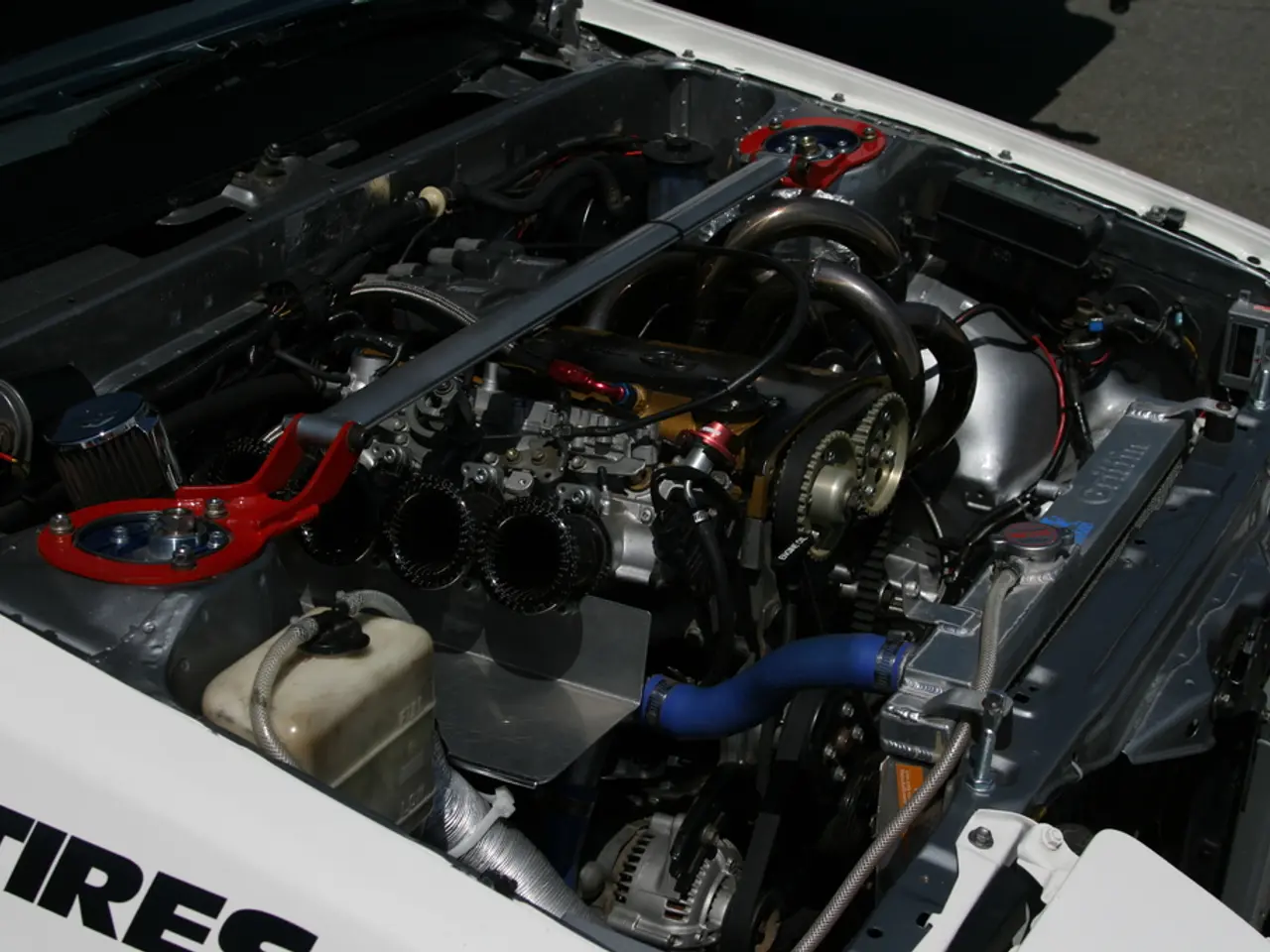Hidden secrets behind BYD's efficient hybrid system that saves fuel?
In a significant leap forward for the automotive industry, Chinese automaker BYD has introduced its fifth-generation DM technology in the Qin L and Seal 06 DM-i models. This new technology, featuring a primarily electric power architecture, promises improved efficiency and extended range for these plug-in hybrid vehicles.
The fifth-generation DM system is the result of numerous iterations and is designed to minimize energy loss at every stage. It achieves this by focusing on reducing energy flow path losses, improving power density, and optimizing the power transmission from the engine to the tires.
One of the key features of this technology is the electric hybrid system (EHS), which has seen a power density increase of 70.28%. This, coupled with a higher integration that saves space, allows for a larger fuel tank. The Qin L, for instance, has been upgraded from a 48-liter fuel tank in the Qin Plus to a 65-liter one.
BYD has also made several adjustments to the vehicle body to reduce wind resistance and improve efficiency. This includes active air intake grilles, low drag calipers, and ultra-low rolling resistance tires.
The fifth-generation DM system requires simultaneous improvements in batteries, thermal management, and more. In line with this, BYD has designed the latest generation of blade batteries specifically for its plug-in hybrid vehicles. These batteries feature a cooling system improvement, improving temperature uniformity by 45%, and a refrigerant technology that can maintain temperature differences within 2 degrees Celsius.
The high-efficiency engine for plug-in hybrids in these models has achieved a thermal efficiency of 46.06%. This, combined with the improvements in battery technology, has allowed BYD to reduce the cost of key components, giving it more leeway in its pricing strategy.
The Qin L DM-i and Seal 06 DM-i are priced between RMB 99,800-139,800 (USD 13,770-19,290). With a fuel consumption of 2.9 liters per 100 kilometers on a depleted battery and a combined range of 2,100 kilometers, these models offer an attractive proposition for environmentally-conscious consumers.
While the name of the engineer responsible for the development of the fifth generation of the DM system remains undisclosed, it is clear that BYD's vertically integrated supply chain and focus on battery technology improvements have played a significant role in this achievement. The continuous decline in the prices of upstream raw materials for power batteries in the past two years has also given BYD's self-made batteries a cost advantage, further enhancing the competitiveness of these new models.
Read also:
- Upcoming iPhone Model: What We Understand Thus Far
- Luke Littler's substantial monetary assets unveiled as the 18-year-old darts prodigy's net worth anticipates significant growth in the coming year.
- Government entity BDL to address the grievances of young agriculturalists
- Preventing Falls: Useful Tips for Avert Accidents








